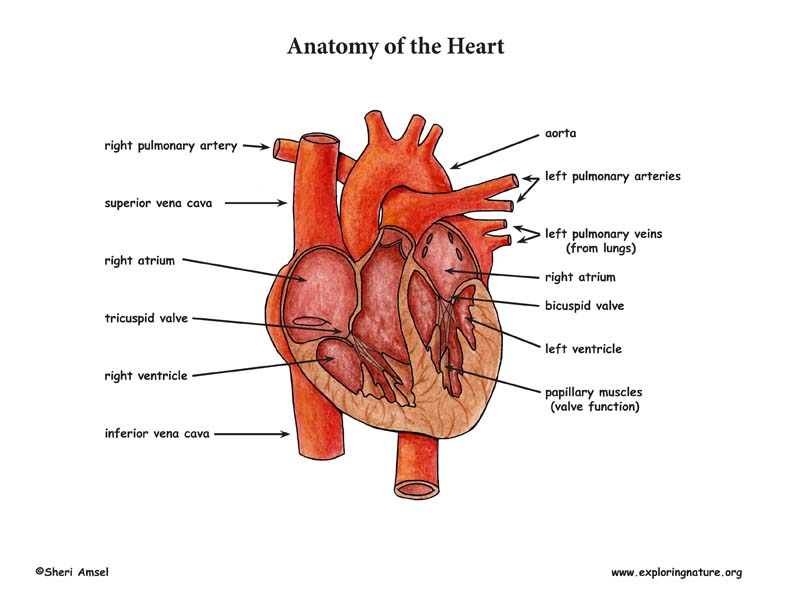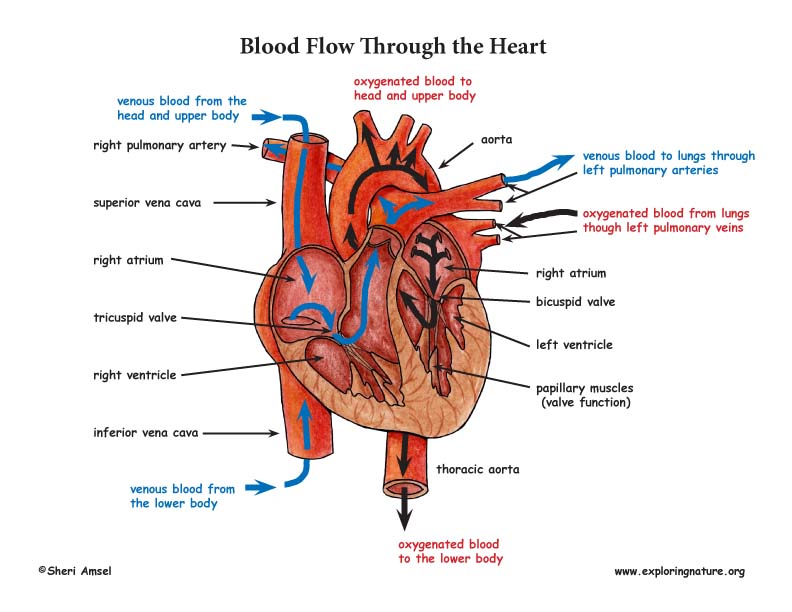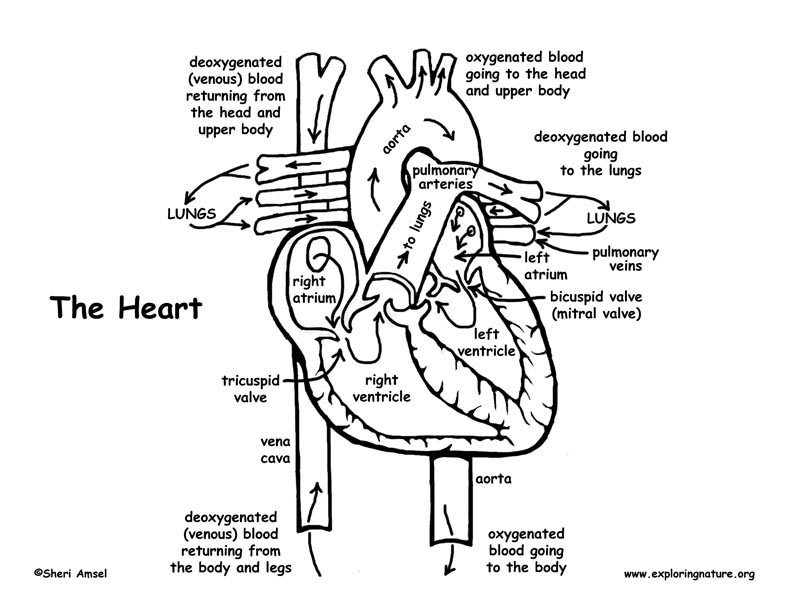

Our blood is pushed all around our bodies by a pump -- the heart. Your heart is about the size of your fist and grows with you as you grow. The heart is made of muscle and weighs less than a pound. It lies between the lungs, protected inside the ribcage. The heart has four chambers; 2 atria on the top and 2 ventricles on the bottom.
Blood circulates through the heart, which pumps it to the lungs where it picks up oxygen. Then the heart pumps the oxygen-rich blood to the rest of the body. The atria are separated from the ventricles by doorways called valves. Valves are important because they keep the blood flowing forward. The circulation of the blood through the heart is always the same. The blood comes back to the heart through two big veins called the vena cava. It flows into the right atrium. Then it passes through the tricuspid (3-cupped) valve into the right ventricle. From there, it is pumped through the pulmonary arteries to the lungs. In the lungs, it picks up oxygen and drops off carbon dioxide. Then it comes back to the heart through the pulmonary veins and flows into the left atrium. Then it goes through the bicuspid (2-cupped) valve (also called the mitral valve) into the left ventricle. The left ventricle, the most muscular and powerful chamber in the heart, pumps the blood through the aorta, the largest artery in the body. From here, the blood flows to the whole body, bringing oxygen to the tissues that need it. Blood flow through the heart: vena cava --- right atrium --- tricuspid valve --- right ventricle --- pulmonary arteries --- lungs --- pulmonary veins --- left atrium --- bicuspid valve --- left ventricle --- aorta


